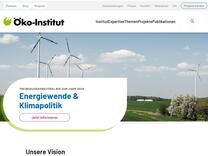Economic Measures for Packaging Waste Prevention | oeko.de https://www.oeko.de/publikation/economic-measures-for-packaging-waste-prevention
The main aim in packaging waste prevention must be the reduction of primary re-source use and of waste generated. To exemplify the urgency: if our plastic packag-ing use would continue to grow like it currently does, even with increased used of recyclates the requirement of virgin feedstock would still double by 20504. The over-all use must decrease. Only if packaging cannot be avoided, it should at least be reusable. If a packaging cannot be reused anymore, it should be recycled, preferably with mechanical material recovery for same or simi- lar functionality or field of applica-tion as the first priority. It is important that a packaging is not only theoretically recy-clable but has a high likelihood of actually being recycled in practice, so that the re-co- vered materials can go into the production of new products. Therefore, measures and investments in collection, source segregation and sorting are equal- ly important. The entire waste management system should be designed and committed to pre-venting littering, incineration, landfilling untreated waste or disposal in non-sanitary landfills to keep materi- als in the loop, keeping them useful for as long as possible.
Die Arbeitshilfe beinhalt eine Einführung in die gesetzlichen Grundlagen wie KSG

